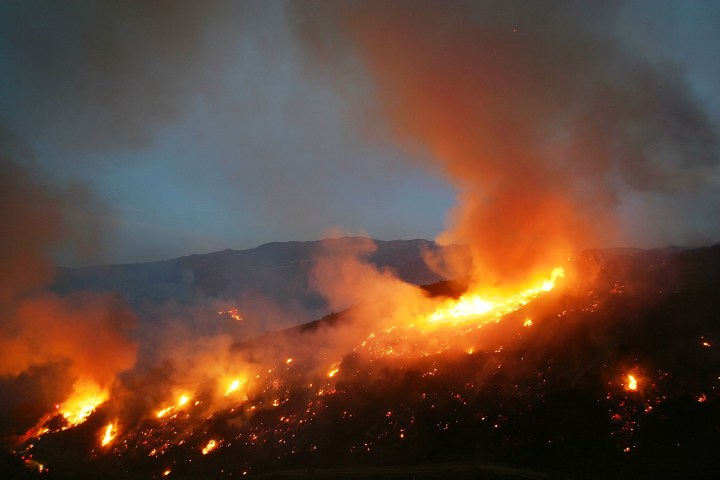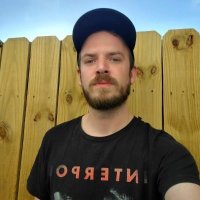
In this year alone, over 8,000 wildfires have burned nearly 4 million acres in California — including six of the largest wildfires California has ever faced in its 170-year history. At one point, it was so bad that the sky turned orange and thousands had to evacuate their homes. But California isn’t alone. In Oregon, wildfires have burned over a million acres this year, and Colorado faced its largest fire to date.
Climate change is a major contributor to the increase in the number and severity of wildfires the West is experiencing, and while we work to fight it, we need to find ways to make these fires less destructive. One company might have the answer.
A few years ago, a team of Stanford University students developed a novel gel-like fluid that was found to be effective in preventing vegetation from catching fire. Furthermore, unlike most other fire-retardant chemicals that are currently in use, this one is nontoxic, and remains effective after up to 2 inches of rain.
Realizing the potential of this new substance, the team spun out of Stanford and founded a company called LaderaTech in 2018. Then, in early 2020, LaderaTech was acquired by Perimeter Solutions, which has since rebranded the gel as Phos-Chek Fortify. It’s currently pushing to get it deployed in California and beyond.
Development is easy. Deployment is hard
Wes Bolsen, the director of global wildfire prevention at Perimeter Solutions and former LaderaTech CEO, tells Digital Trends that he wants to get this product used much more widely to help prevent the massive wildfires we’ve been seeing from ever starting.
“Most of the time, it’s fairly predictable where a lot of the fire starts are coming from. That’s where we need to be getting the product out,” Bolsen says. “You’re almost irresponsible if you’re not applying products like this in areas that you know are a high fire threat risk.”

Bolsen says that Fortify would typically only need to be applied once shortly before the fire season begins. He says that since it can stick around after up to 2inches of rain, land-management agencies probably wouldn’t have to worry about reapplying it, because an area that experiences 2 inches of rain probably isn’t going to see a fire again that year.
“Two inches of rain will turn the vegetation green again. The ground is wet. Most of the fire community says that’s the end of the fire season for that region,” Bolsen says.
“It’s like a drug trial. The placebo patient that didn’t get it continued to have fires, and the areas where we did place it, there weren’t fire starts.”
That doesn’t mean the fire season is over for the whole state, but it’s pretty likely it’s over for the part of the state that got 2 inches or more of rain. At that point, fire control organizations can start focusing their resources elsewhere, as they can be fairly confident that the affected area is probably not going to catch fire.
Unfortunately, no fire departments in California or any other state are currently using Phos-Chek Fortify to help prevent fires. Fire departments can only use products that have been approved by the U.S. Forest Service, and the approval process for new products is slow and protracted. This is a necessary precaution, though, as we need to make sure the chemicals we spray don’t cause unintended environmental damage. But doing so also means that potentially game-changing wildfire prevention tools have to wait, no matter how promising they may be.

Bolsen says states could have this product applied first in areas that are known to be at a high risk for fire and then go from there and apply it wherever else it might be needed. He says they applied it along a four-mile stretch of road in Southern California called Rocky Peak in 2019 that had been experiencing dozens of fire starts every year and found the product worked extremely well. There were fire starts in surrounding areas but not those four miles of road.
“With the use of the Phos-Chek Fortify product, we took it to zero fire starts last year, ” Bolsen says. “It’s like a drug trial. The placebo patient that didn’t get it continued to have fires, and the areas where we did place it, there weren’t fire starts.”
Shifting the strategy
There needs to be more focus on prevention instead of reaction, Bolsen says. He’d like to see states invest money more in preventing fires, because he said the budgets mostly focus on fighting them right now.
“I think the fire community tends to have a mentality of, ‘we’ll get more equipment and more people and go fight [fires].’ But [what if] what we do is we help prevent them?” Bolsen says. “I think that’s going to take a mentality shift to prevention and protection.”
On the positive side of things, Bolsen says utility companies have been proactive when it comes to investing in preventing fires. They have a lot of infrastructure they can lose to a fire, and fires often start in places where we see that infrastructure. He says it’s good for the state and the company when they invest in preventing fires before they start.
“Suppose — I’m going to use a big number — a utility spends $50 million dollars working to prevent fires. It needs to stop one that would have been bad. A single fire can bankrupt a utility,” Bolsen says. “It’s about risk avoidance. It’s about risk management. It’s almost like an insurance policy.”



